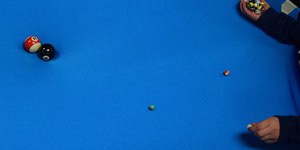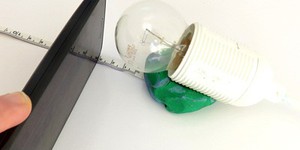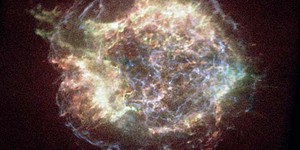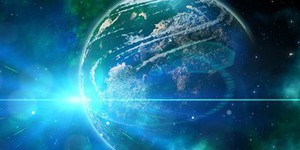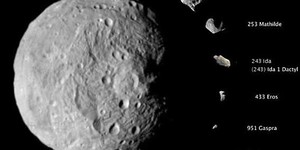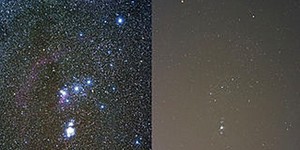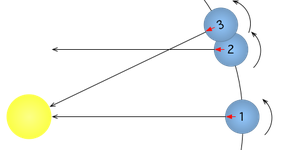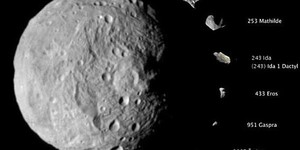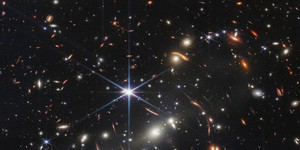High School, Astronomy Science Projects (27 results)
Astronomy is science that will challenge your imagination. How many stars in a galaxy? How many galaxies in the known universe? How many strange worlds are out there on other planets, orbiting other stars, and what are they like? Is there life on planets besides Earth? The distances are mind-boggling; the numbers are immense.
|
Select a resource
Sort by
|
Why do the planets orbit the sun without flying off into space? Do they move in perfect circles or do their orbits take a different shape? And how could you possibly do a science project about any of this—you can't do an experiment with the planets! However, you can build a model of our solar system that demonstrates the concept of gravity, using balls of different sizes to represent the sun and planets. Watch this video for an excellent introduction to the model:
Think…
Read more
Featured
Have you heard that garlic powder is supposed to inhibit the growth of bacteria? Which do you think would make a better disinfectant: a solution of garlic powder or a solution of bleach? This project shows you a straightforward way to compare the effectiveness of different disinfectants (or other antimicrobial agents), by measuring zones of inhibition on a culture plate.
Read more
Have you ever looked up at the stars at night and wondered how fast they were moving or how far away they were? By studying how the brightness of a star changes with distance, you can answer those questions. In this astronomy science project, you'll create a model of starlight and use a sensor app with your smartphone to discover the key relationship between brightness and distance.
Read more
New
Many individuals who are blind or visually impaired use canes to navigate their surroundings, using their sense of touch to detect obstacles. What if you could create an electronic cane that emits an audible warning before coming into contact with an object? This project allows you to do just that by incorporating an ultrasonic distance sensor and a buzzer to alert the user of approaching obstacles. You can customize the cane by adding additional features or altering the design, such as using a…
Read more
Have you ever seen amazing, colored images of objects in space, like stars or even entire galaxies? Some of these images were originally taken with forms of radiation that the human eye cannot actually see, like x-rays. In order to create the beautiful pictures you see in the news or online, scientists have to use an image-editing program to add color to them. In this astronomy science project, you will use raw x-ray data from NASA's Chandra X-ray Observatory telescope to create amazing…
Read more
Space exploration, living, and working in space exposes space travelers and their equipment to radiation not present on Earth. The study of how we can protect ourselves and our equipment is an essential part of space exploration. Although you will not be able to test at levels equivalent to what you might encounter in space, you can test with lower and safer levels of radiation in the lab or at your home.
There are many types of radiation. This project concentrates on ionizing radiation, or…
Read more
Did you know that in addition to the Sun and planets, our solar system is filled with millions of asteroids, which are chunks of rock left over from the early days of its formation, or from collisions between larger objects like planets? Agencies like NASA track asteroids, not only because they might pose a threat to humanity by colliding with Earth, but because they can provide us with information about the history of our solar system, and even be useful for mining raw materials in space! In…
Read more
New
Artificial intelligence (AI) programs can now generate photorealistic pictures of people who do not exist in the real world. How can you tell if a picture is of a real person or a fake, AI-generated person? What features of the picture do people use to decide whether the face is real or AI-generated? In this project, you will explore these questions as you ask volunteers to look at both real and AI-generated pictures of human faces.
Read more
This is a great project for someone interested in both stargazing and photography. Bright city lights and even the light of the full Moon obscure the dimmest stars, which can make identifying constellations more difficult. In this astronomy science project, you will calibrate a digital camera to measure the skyglow in different locations. This can be a great tool to comparing the quality of different star viewing locations.
Read more
Do you wake up at the crack of dawn, or do you need an alarm clock to wake you up each morning? It may surprise you that the two are not always in synch. Nowadays, we use Standard Time to set our watches instead of Solar Time. Which method of timekeeping is the most accurate? Get ready to synchronize your watches!
Timekeeping is the science of how to keep time with precision and accuracy. People have been finding ways of measuring time for thousands of years, usually based on the movements…
Read more
You've heard of gold mining and coal mining, but think outside the box...or the planet...what about asteroid mining? Scientists, engineers, and business people believe asteroid mining is feasible, and they are in the beginning stages of long-term plans to mine asteroids for valuable resources during space missions. You don't want to miss out on all the fun; in this science project, you will come up with your own scientific plan for an asteroid mining company. We will help get you started by…
Read more
For an advanced science fair project, you can build your own telescope and learn how to use it to make observations of the night sky. Can you make your own observations to determine the orbital period of Jupiter's major moons?
The Dobsonian telescope, first built and popularized by astronomer John Dobson, is considered to be the best bang-for-your-buck if you want to build a good amateur telescope. The smaller the telescope's aperture the less expensive to build, but also the less…
Read more
The James Webb Space Telescope (JWST) has shown us some amazing images of space, like its first "deep field" image (Figure 1). The JWST sees the universe in the infrared part of the electromagnet spectrum, which is not visible to the human eye. How, then, does it produce color images like the one in Figure 1? Scientists must colorize the images, or apply "false color." They map different bands of the infrared spectrum to colors of visible light, resulting in an image humans can view. Luckily,…
Read more
|
Explore Our Science Videos
Underwater Color Bursts – STEM Activity
Explore Enzyme Activity!
3D Print a Drone Frame

